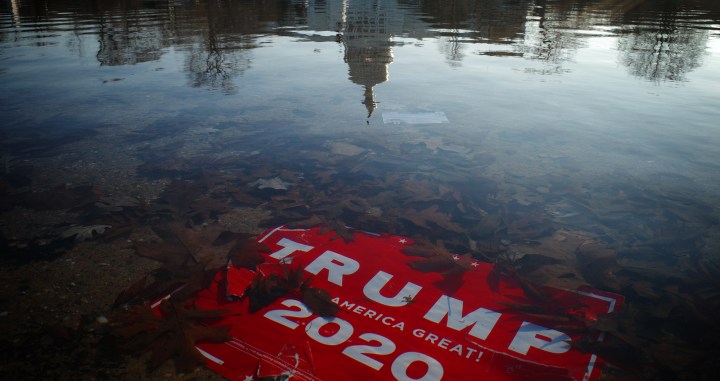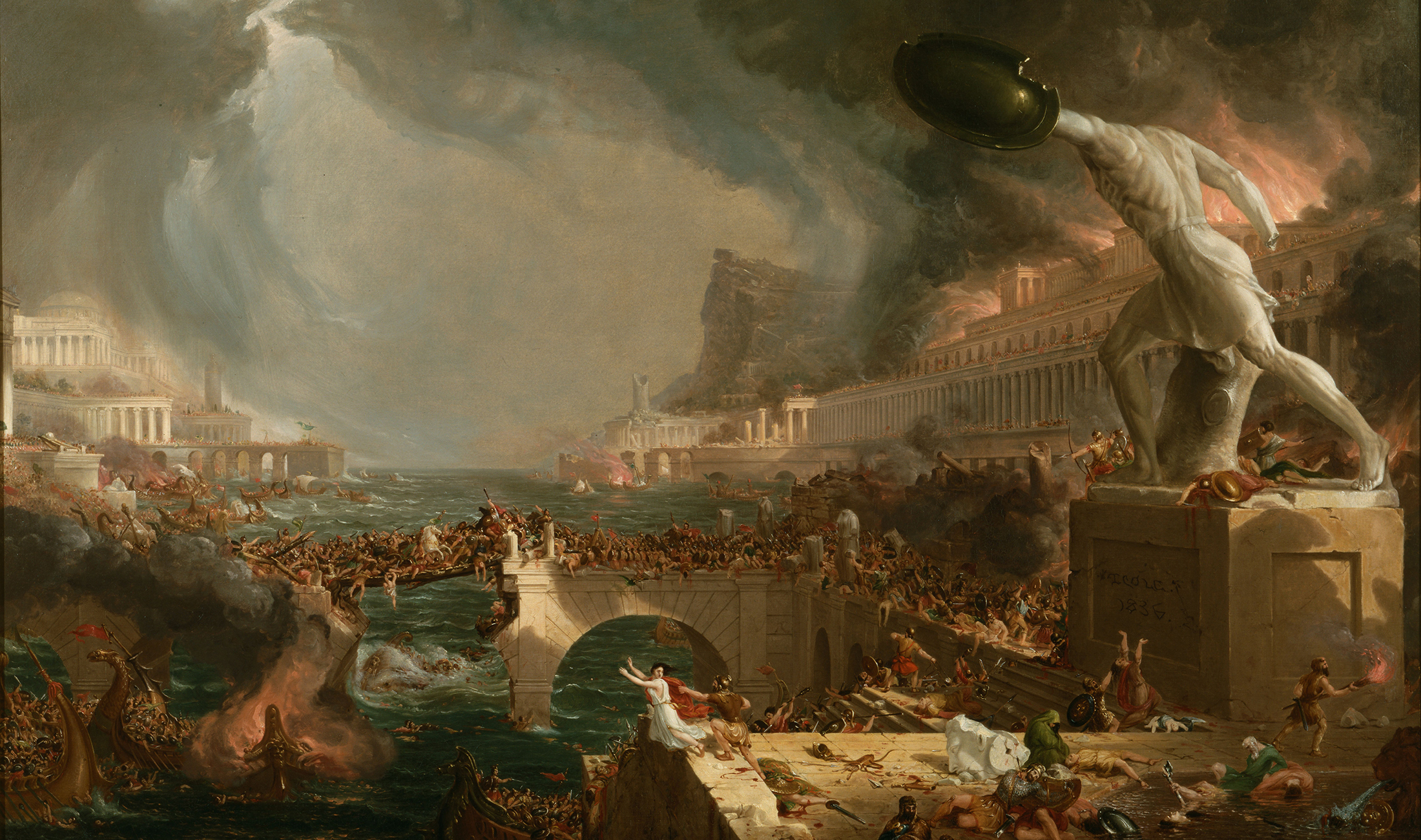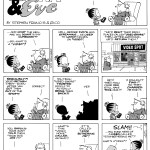STORMING OF THE CAPITOL
A desecration of the sacred heart of US democracy

The assault by a deluded mob on the US Capitol is now history, but the consequences and impact on the nation will remain for a long time. Congress and its historic building are central to the American ideal and this assault has struck a blow to that idea.
“All legislative Powers herein granted shall be vested in a Congress of the United States, which shall consist of a Senate and House of Representatives.” — United States Constitution, Article I, Section 1
On Sunday, Ross Douthat, one of the New York Times’ leading resident Burkean conservatives, wrote about the whateveritwas on Capitol Hill on Wednesday to say, “I will be honest and say that I don’t know exactly how to interpret the surreal events that unfolded this week in Washington, DC, when a mob inflamed by online memes and presidential fantasies rampaged through the halls of the US Capitol.
“Throughout the Trump era there has been a debate among his critics about whether to regard this presidency as a mortal threat to the Republic or a degrading interlude in its decline, a revival of 1930s fascism or 1870s white supremacy or as something more purely virtual, performative and astonishingly weak.
“The riot at the Capitol occupies a liminal, unstable space between these two interpretations. Cock your head one way and it looks like the fulfillment of every Resistance warning: The head of the executive branch incites a mob to take over the seat of the legislative branch and prevent power from being passed to his successor. Cock your head another and it looks like the culmination of the Trump Show: A politically impotent, conspiracy-addled president whips up a rabble of costumed selfie-snappers and then goes home to the White House with no plan except to watch them get rowdy on TV.”
Whatever this event actually was (or what it will ultimately be remembered as in history texts), its impact has clearly touched – painfully – a nerve in the US’s national consciousness. It has shaken trust in the relationship between those who are given the right to govern and those they exercise authority over – and how those who govern exercise that status. In fact, the US Capitol has a unique place in this question throughout American political life and history – and in the nation’s popular culture as well.
Back before the establishment of the US government’s 1787 Constitution, and in the early years after independence, the country’s increasingly ineffectual government under the Articles of Confederation became so weak it kept being forced to pack up secretly and move to another town, fleeing the small permanent army whose pauperised soldiers had had the temerity to insist on being paid their promised salaries and bonuses.
By the time the new Constitution was adopted, following wrangles over where America’s permanent capital would be located, realpolitik compromises proposed making a square of territory with sides 16km long, drawn from Maryland and Virginia, bordering the Potomac River near George Washington’s plantation at Mt Vernon, into a new, planned capital city. Its very urban design was supposed to demonstrate the ideas and ideals of a new government, and the public buildings would amplify those messages to everyone who saw them, entered into them, or learnt of them.
The national legislature was to be ground zero for this new city. Perched on a modest hillside, the city’s streets would radiate outward into four quadrants, and all of the city’s addresses bore a designation of NW, SW, NE, or SE, with all four of them centring on the location of the new legislature’s home. By contrast, the president’s home and office was to be located diagonally away from the legislature’s home to the northwest, about 1.5km away from the Congress. (Eventually the Supreme Court gained a home in a purpose-built building near Congress.)
This positioning of the Congress and its home was deliberate – it was designed to convey meaning. The country’s new Constitution spoke directly to the centrality of the country’s legislature in its very first article, concerning Congress’s structure, its enumerated powers, and its duties – all before those of the new position of chief executive – or the judiciary.
Meanwhile, the architects and designers of the Capitol Building reached back to a Greco-Roman neoclassical style, with all those columns, pediments, and other features redolent of the architecture of the classical Mediterranean world, tying in with how the Founding Fathers thought of democratic ideals, the primacy of law, and a detailed legal system. Here again, this was no accident. Washington’s neoclassical imagery was very different from the popular Georgian architectural model imported from England and in wide use throughout the new country – even to the exterior of the White House. As an important aside, presidential inaugurations take place outside the Capitol (now on a temporary structure built on the west face of the building), rather than at the White House. This is just one further demonstration of the Capitol – and the Congress it houses – as the public repository of the sources of national authority.
Over the years, the original Capitol building was expanded several times along its north-south axis (in addition to urgent restorations after the British set fire to the building in 1814, during the War of 1812) in order to create larger, more spacious chambers for the two Houses and offices for their leaders. Over time, a number of office blocks adjacent to the Capitol have provided office suites for each member, and committee and hearing rooms have been built as well.
In time, the Capitol’s original, rather modest central dome was deemed to be too inconspicuous in contrast to the newer, larger building that had come into being, and so construction on a new iron dome began in the 1850s. This dome was still unfinished when Abraham Lincoln became president in 1861, as the Civil War had broken out. Despite the fact that such concentrations of men and materials might drain against the goal of winning the war, Lincoln determined that continuing the construction would be a thoroughly symbolic notice of the country’s continuing survival, despite the obvious costs.

Thomas Cole’s ‘Destruction’ from the series Course of Empire (1836). (Image: Wikipedia)
The interior decor of the building always inspires and impresses. Its central rotunda under the dome houses an array of very large paintings by some of the nation’s early professional painters, depicting key moments in an idealised American history. And the upper areas of the dome are covered by frescoes of other key historical events, and the apotheosis of George Washington into heaven is at the top section of the dome. Much of the dome’s decoration was actually made (or designed) by an immigrant artist who had fled Italy for America when the 1848 revolutionary movements in Europe were crushed. The decoration and structure of the Capitol are like the mother church for America’s secular religion.
A longtime friend of the writer has had a career as a congressional staff aide and then as a congressional committee staffer. Asked about his feelings when he watched the televised images of the mob assailing this building and threatening the members, he wrote to me, “When I first set foot on the House floor as a young Congressional staff member I teared up, thinking of the greats who had stood in that spot. I was honored to have been there. On January 6, I couldn’t help crying over the desecration of that hallowed space.” I completely understood.
Congress – and the debates and speeches in the Capitol – loom large in the public’s imagination. There are the annual presidential State of the Union speeches. There was Lyndon Johnson’s moment of connection to history when he told Congress “We shall overcome” as he urged passage of the 1964 Civil Rights Act. There have been debates and hearings over impeachments. There were the live broadcasts of the 1973 Senate Special Select Committee on the Watergate crisis, and so much more. The inherent drama in congressional events makes it a natural for public consumption to see the democratic process in action at its best, and at its worst.
Congress similarly is large and proud in popular culture – in the movies and television. The Congress and its physical manifestation in the Capitol becomes the citizen’s closest connection to the democratic ideal. In the classic film Mr Smith Goes to Washington, an honest, naive everyman, Jefferson Smith, appointed to the Senate to replace a recently deceased senator, wages war against corruption and mendacity, and carries out a filibuster (one member speaking for many hours without yielding to another senator) until dishonesty is rooted out.
Another classic film, Washington Story, similarly speaks to corruption among the powerful, even as the action gives a close lesson of how the people’s House actually works. Yet another major work, Advise and Consent, focuses intently on the interplay in the Senate’s task in confirming a nominee for secretary of state. And then there are the films The American President and Charlie Wilson’s War that speak to issues like environmental protection and fighting Soviet military intervention in Afghanistan, but as seen through the optic of a struggle between Congress and the executive branch.
And there is Steven Spielberg’s Lincoln, the period piece that looks closely at the efforts of Abraham Lincoln (including some arm twisting or more) to get a reluctant Congress to pass the 13th Amendment to the Constitution to abolish slavery. Then, in television series like West Wing and Madam Secretary (now Madam President), while the focus is supposed to be the president and their respective staffs, much of the onscreen action is really struggles, disagreements, and intrigues with and within Congress.
What all these cinematic works – and many more – have in common are that they are a kind of primer on how the US government actually carries out the tough processes of debating, scheming, negotiating, and hammering out bills and passing laws. There are good guys and bad ones; weak and resolute ones; principled ones and ones with no inner core. And sometimes, even really flawed ones who do right.
Such cultural referents all help cement the idea that Congress is where citizens go for “redress of grievances”, because its members are each elected by citizens. And so here is where the evil heart of Wednesday’s assault on the people’s House must lie. This most recent mob and so many others have been told repeatedly, but falsely by an amoral (and/or unhinged) president and his henchmen and henchwomen that the country was being ripped from them.
The storming of the Capitol, live on television, farcical but deadly, demanding Congress do what was “right” to repair the pseudo-wrongs perpetuated on the nation by a vast national election was now their only recourse. That a deluded mob chose to destroy federal property, take lives and threaten more, desecrated the very idea of Congress as a constitutional body, has now taken something from every American. It will be extremely difficult to repair or rebuild.
And, of course, the Trump presidency and all who have served him for the past four years will now – and forever – be linked to the malignant idea of destroying the national constitutional order in chimerical pursuit of one man’s personal political power. DM



















 Become an Insider
Become an Insider
What truly amazes me is how far America’s standards have fallen:
In the 70s, Nixon was forced to resign (to avoid impeachment) after being caught in a plot to spy on his democratic rivals; in the 80s, senator Gary Hart was forced to withdraw from the democratic primaries because he *gasp* had an extra-marital affair.
Today, after Orange Donny encouraged, tacitly supported and did nothing to prevent (when the National Guard was finally called in, it was Pence who did it) – and even, at the end, told these same seditionists that he ‘loved them’ – it appears there will STILL not be enough bipartisan support in the Senate to ensure this narcissistic sociopath is impeached and is never allowed to again run for public office…
…Republicans should hang their collective heads in shame!
…and also for disguising their fascist troops with BlackLivesMatter t-shirts and Antifas squads burning and ransacking businesses and buildings, but in a “mostly peaceful” manner……All condoned by new comrade President Joe XiBiden and his soon-to-be Prez Mrs Harris….I guess..
Beautifully written article